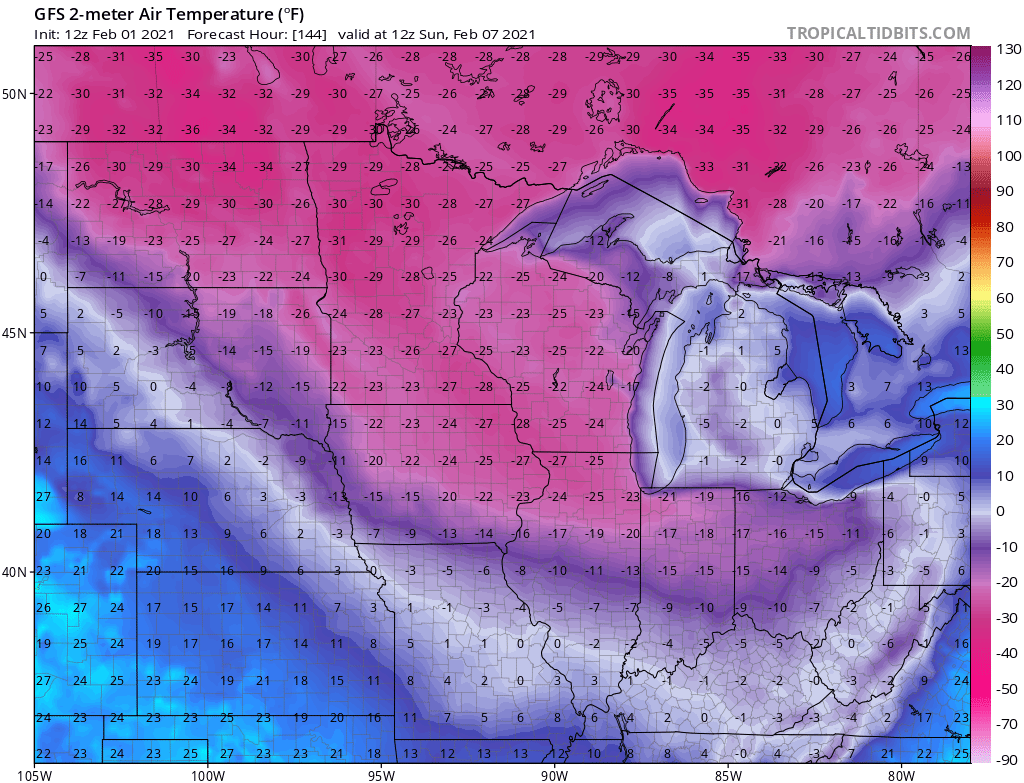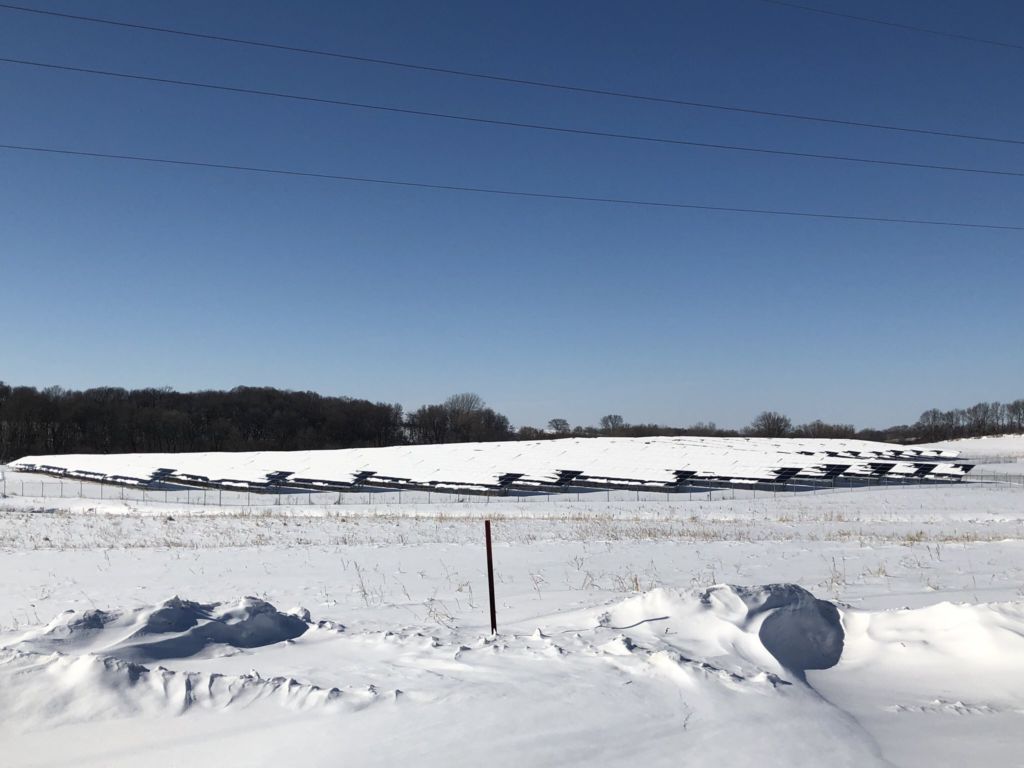How Will the Weekend Polar Vortex Affect Our Energy System?
Minnesotans are bracing for frigid temperatures this weekend, as some forecasts are estimating temperatures could reach -20° F in the Twin Cities and -30° F in Greater Minnesota on Sunday morning. The Polar Vortex of 2021 could be the biggest strain on Minnesota’s energy system in the last year, and it will be Minnesota’s coal, nuclear and natural gas fleet that will be the unsung heroes of the weekend.
The Forecast
The National Oceanic and Atmospheric Administration (NOAA) produced the image below detailing the likely temperatures Sunday morning. Temperatures will be below -22° F in all parts of the state, and parts of North Dakota will see the mercury dip below -30° F.

Where is the Wind Energy?
During the Polar Vortex of 2019, we learned that wind turbines are shut down when temperatures are below -22° F because it is too cold to operate them safely (see the figure below). This means it will be too cold for the wind turbines built by Xcel Energy, Minnesota Power, and Otter Tail Power in Minnesota and North Dakota to generate any electricity. 
In fact, the wind turbines will actually consume electricity at these temperatures because the turbines use electric heaters in their gearboxes to keep the oil in the housing from freezing, which would cause damage to the turbine. During the 2019 Polar Vortex, it was reported that wind turbines were consuming 2 MW of electricity. This means wind turbines will be a liability on the grid when the power will be needed most.
What Will Solar Do?
While we know that wind turbines will likely be out of commission for the deep freeze, solar is a wild card. Cold temperatures improve the performance of solar facilities because the inverters are able to function better, but this won’t help the grid at night when temperatures are coldest. There is also the possibility that it will be too cloudy for the panels to produce much power, and there could be snow on the solar panels like there was during the last Polar Vortex.
There is a forecast for cloudy conditions this weekend, and we could see snow on Thursday. Snow would be problematic because according to Ralph Jacobson, the Founder of IPS Solar, it is “too expensive” to clear snow off of solar panels.

We may or may not see significant generation from solar panels this weekend, but the fact that we don’t know for sure is part of the problem. Energy demand will soar as temperatures plummet, and this should help everyday Minnesotans understand the importance of Minnesota’s reliable coal, nuclear, and natural gas facilities.
Will Xcel’s Natural Gas System Keep Up?
During the 2019 Polar Vortex, Xcel Energy cut natural gas service to 180 customers to prevent a wider system failure and the company asked all 460,000 of their natural gas customers in Minnesota to lower their thermostats to 63 degrees to conserve gas supplies. Ironically, Xcel Energy provided electric space heaters to keep these houses warm enough to prevent the pipes from freezing, and this electricity was generated by the coal plants they want to shut down in the next few years.
Xcel has upgraded its pipeline system since the 2019 arctic blast, so it’s unlikely they will need to ask customers to conserve again, but the 2019 events should make all Minnesotans wary of becoming overly reliant upon one source of energy for home heating and electricity generation.
As Xcel (foolishly) shuts down their coal plants, they will need to build more natural gas plants to make sure the electricity doesn’t go out when the wind isn’t blowing and the sun isn’t shining. This means any malfunction or failure in the natural gas delivery system could result in a loss of home heating fuel and electricity during extreme weather events like the Polar Vortex.
What Will We Do in the Future?
The cold weather this weekend will be manageable because of Minnesota’s fleet of reliable power plants, but what will we do in the future if Gov. Tim Walz is able to implement his plan to force all electricity generated in Minnesota to be carbon-free by 2040 if his plans don’t allow utilities to build new nuclear power plants, count large hydro from Canada, or use carbon capture and sequestration technologies? These are the questions we need to ask now before it is too late.